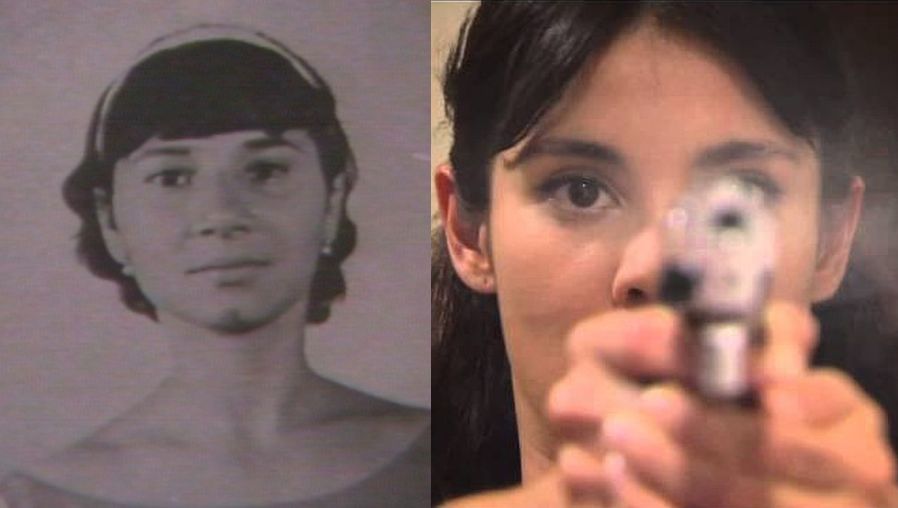 The young Griselda Blanco: real (left) and telenovela versions.
The young Griselda Blanco: real (left) and telenovela versions.
★★★
“Art VAGUELY imitating life.”
It’s probably safe to say La Viuda Negra is “inspired” by the story of Griselda Blanco, rather than anything more. But there are aspects of the telenovela which are surprisingly accurate, especially in the early stages, before things begin diverging for dramatic purposes. [Note: of necessity, what follows will include major spoilers for the TV series] For example, Griselda did move to the city of Medellin with her mother at an early age, not long after the end of World War 2, and it does appear she was involved in criminal activities there, before even becoming a teenager in the mid-fifties.
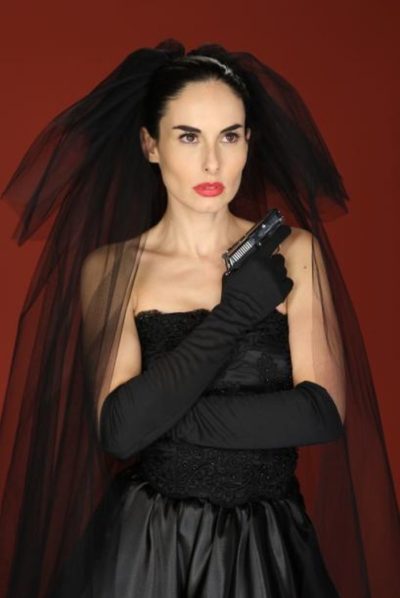 A focus of the early episodes sees Blanco joining a gang, which then kidnaps the scion of a rich local family. In the telenovela, this kick-starts her career, because the victim dies, and his father vows vengeance on Griselda, forcing her to go on the run as a young adult. The reality is perhaps even more astonishing, with her former lover, Charles Cosby, reporting that the kidnap and murder took place when Blanco was only eleven years old. After the boy’s parents refused to pay up, the frustrated gang gave her a revolver and challenged her to shoot him in the head. Challenge accepted…
A focus of the early episodes sees Blanco joining a gang, which then kidnaps the scion of a rich local family. In the telenovela, this kick-starts her career, because the victim dies, and his father vows vengeance on Griselda, forcing her to go on the run as a young adult. The reality is perhaps even more astonishing, with her former lover, Charles Cosby, reporting that the kidnap and murder took place when Blanco was only eleven years old. After the boy’s parents refused to pay up, the frustrated gang gave her a revolver and challenged her to shoot him in the head. Challenge accepted…
It was around this time she also met her first husband, Carlos Trujillo. In real life, he was involved in forging immigration documents; she had three children with him, all of whom would become involved in the drug trade, and suffer violent ends. The same happened to Trujillo, whom Griselda had killed, shortly after they divorced at the end of the sixties. In La Viuda Negra, her first husband, Puntilla, is part of the kidnapping gang, who goes on the run with Griselda, and is killed by him in Episode 6, after betraying her. [This is kind of a theme through the TV series; if Ms. Blanco has serious trust issues as a result, it’s understandable!]
It’s with her second husband that her career as a drug queen really started to take off, both in reality and fiction – though the latter has Robayo operating over the border in Ecuador, where Griselda (Serradilla) takes refuge. They establish a pipeline to move their product from South America to the United States, using attractive women as mules. The TV version has her having high-heeled shoes built, with hidden compartments to hide the drugs. That seemed a very inefficient approach to me: really, how much could one person carry? The reality made more sense: Blanco actually developed and used specially-made corsets and other lingerie, capable of holding up to seven pounds of cocaine per person. Even in those days, that was worth about a million dollars.
In the TV series, there’s a diversion after they’re established in New York, as Italian Mafia kingpin, Enzo Vittoria, falls in love with Griselda, and abducts her for reasons of affection, despite her having previously shot and wounded him. Never one to leave a job unfinished, she shoots him again, on their enforced wedding day (Episode 19), and this time completes the job. [Should that count as another murdered husband? They technically weren’t married…] However, she gradually grows estranged from Robayo, not least over the upbringing of their son, Michael Corleone Blanco – yes, he was named that in real life too! – and kills him in Episode 26, just before being arrested by long-running DEA adversary, Norm Jones (Gamboa), after having relocated to Miami.
The truth is somewhat different. Vittoria appears pure invention, although DEA agent Bob Palumbo did spend more than a decade on the trail of Blanco. There was indeed a falling out between her and second husband, Alberto Bravo, ending in her killing him. However, this took place back in Colombia. She and her top killers, Humberto Quirana and Jorge ‘Rivi’ Ayala, went to meet Bravo in a parking lot; the resulting gun-battle left Bravo and six bodyguards dead, and Blanco wounded. Later in the seventies, she returned to Florida, rising to the top in a brutal reign of terror, culminating in an infamous double homicide at Dadeland Mall. Her network brought in as much as $80 million a month, but Palombo eventually got his woman in 1985.
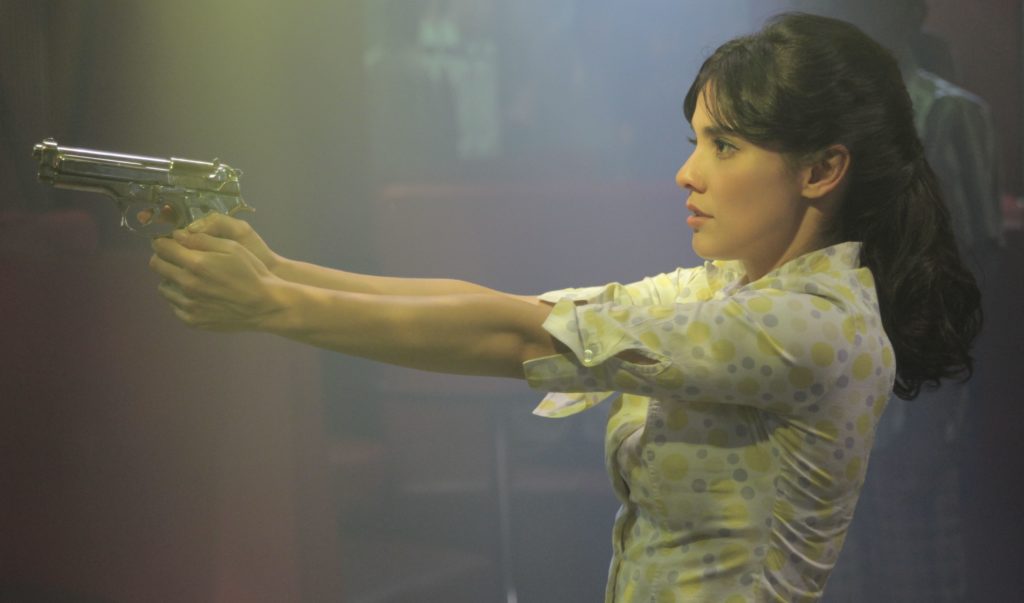 So, jail on both sides. But this is where the stories really start to diverge. In reality, she served 13 years in New York for cocaine smuggling, then was shipped to Florida where worse trouble awaited. For hitman ‘Rivi’ had turned stool-pigeon, and with his testimony linking her to literally dozens of murders, the death penalty loomed large. However, his testimony was largely discredited after a bizarre scandal in which he was shown to have paid secretaries at the Miami-Dade State Attorney’s Office for phone sex. In the end, prosecutors had to settle for lesser charges; Blanco got 20 years, and was released after only seven, returning to Colombia at the end of her sentence in 2004. The day she left, ‘Rivi’ was stabbed eight times in Dade County jail.
So, jail on both sides. But this is where the stories really start to diverge. In reality, she served 13 years in New York for cocaine smuggling, then was shipped to Florida where worse trouble awaited. For hitman ‘Rivi’ had turned stool-pigeon, and with his testimony linking her to literally dozens of murders, the death penalty loomed large. However, his testimony was largely discredited after a bizarre scandal in which he was shown to have paid secretaries at the Miami-Dade State Attorney’s Office for phone sex. In the end, prosecutors had to settle for lesser charges; Blanco got 20 years, and was released after only seven, returning to Colombia at the end of her sentence in 2004. The day she left, ‘Rivi’ was stabbed eight times in Dade County jail.
The TV series compacts the nineteen years Blanco really spent behind bars, in two separate sentences, into one period in New York alone. These 18 episodes add additional, entirely spurious aspects such as Griselda being forced to engage in cage fights (!) with other inmates, or her being attacked by guards, and getting revenge by setting them on fire. There are a couple of aspects one might call ‘somewhat true’. There was a plan hatched to kidnap the son of John F. Kennedy and exchange him for Blanco, though it never came as close to success as depicted in the telenovela. And while it is true that a man struck up a relationship by writing to her while she was inside, Charles Cosby was not the undercover DEA agent, portrayed as “Tyler” in the TV version.
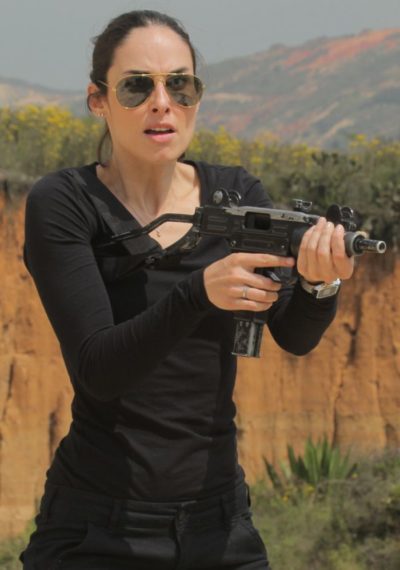 Certainly, there’s major dramatic license in Blanco’s departure from prison. Rather than just reaching the end of her sentence, there’s a dramatic escape from literally being in the electric chair [which is odd, since no-one has been executed in New York state since 1963, and no woman since Martha Jule Beck in 1951]. Using a drug which gives the impression of death, allows her gang to break her out by ambulance (Episode 44). From there she returns to Colombia, and only at this point, does Blanco cross paths with the most notorious drug-lord of them all, Pablo Escovar. However, it appears they knew each other far longer. Some sources say they were childhood friends, others that he was Griselda’s “great apprentice,” and there are even salacious whispers they were lovers.
Certainly, there’s major dramatic license in Blanco’s departure from prison. Rather than just reaching the end of her sentence, there’s a dramatic escape from literally being in the electric chair [which is odd, since no-one has been executed in New York state since 1963, and no woman since Martha Jule Beck in 1951]. Using a drug which gives the impression of death, allows her gang to break her out by ambulance (Episode 44). From there she returns to Colombia, and only at this point, does Blanco cross paths with the most notorious drug-lord of them all, Pablo Escovar. However, it appears they knew each other far longer. Some sources say they were childhood friends, others that he was Griselda’s “great apprentice,” and there are even salacious whispers they were lovers.
So any connection to fact in the show has now evaporated entirely. By this point, the real Griselda Blanco was in her sixties, and suffering badly from the effects of her life of excess – according to reports, “Court records show Blanco was a drug addict who consumed vast quantities of ‘bazooka,’ a potent form of smokeable, unrefined cocaine… would force men and women to have sex at gunpoint, and had frequent bisexual orgies.” After her release, she apparently lived quietly in Medellin. But it wasn’t enough to save her from a violent end. In September 2012, she was killed outside a butcher’s shop – ironically, in a motorcycle drive-by, the style of assassination she had pioneered and which became one of her trademarks.
This is as good a place as any, to mention the remarkably straight-edge depiction of Blanco in the telenovela. Unlike the sex- and drug-fiend described above, teleGriselda never gets high on her own supply, and is strictly monogamous – when anyone can get past her trust issues, that is. That’s something which I also noticed about La Reina Del Sur – and the Mexican TV version was radically different from the American one, where the heroine was not averse to powdering her nose now and again. It’s an odd version of morality, considering how there’s apparently no problem with her being directly and indirectly responsible for the deaths of dozens of people. “Yeah, but they were all bad,” to borrow a line from True Lies.
In the television version, however, she returns to business back on home turf. But there’s a problem, in the shape of Otalvaro. He’s another Colombian drug-runner, who holds a grudge against Blanco because she ordered the execution of his niece in her New York days – albeit for business rather than personal reasons. He teams up with Susana, another character apparently created for the show. She’s a Florida real-estate agent, who becomes part of Griselda’s crew, and is also a lesbian who has a long-time secret affection for her. When her hopes are crushed, she turns bitter, joining forces with Otalvaro, and tangentially, Escobar. Otalvaro’s daughter, Karla, meanwhile, goes the other way, falling for Michael Blanco after Otalvaro kidnaps him; she helps him escape and becomes part of Griselda’s crew.
In truth, these later episodes are less interesting, largely because the focus is so diluted – it gets away from Griselda, rather than focusing on her, as it should since she’s the most interesting character. I haven’t even mentioned Silvio, who betrays Griselda and tries to steal a submarine (!) packed with cocaine. He then gets miffed after she orders the death of his girlfriend, and begins his own, independent plot to take revenge on the family. Also still rattling around Medellin in the later stages is Jones, the series’s version of Bob Palumbo. He isn’t just chasing after her, he also ends up falling in love and prepared to do anything for her. Throw in his son and a renegade colleague, Garcia, prepared to go to any lengths to capture Griselda, and you’ll understand why it feels the writers are going for volume over quality in their storyline elements by the end.
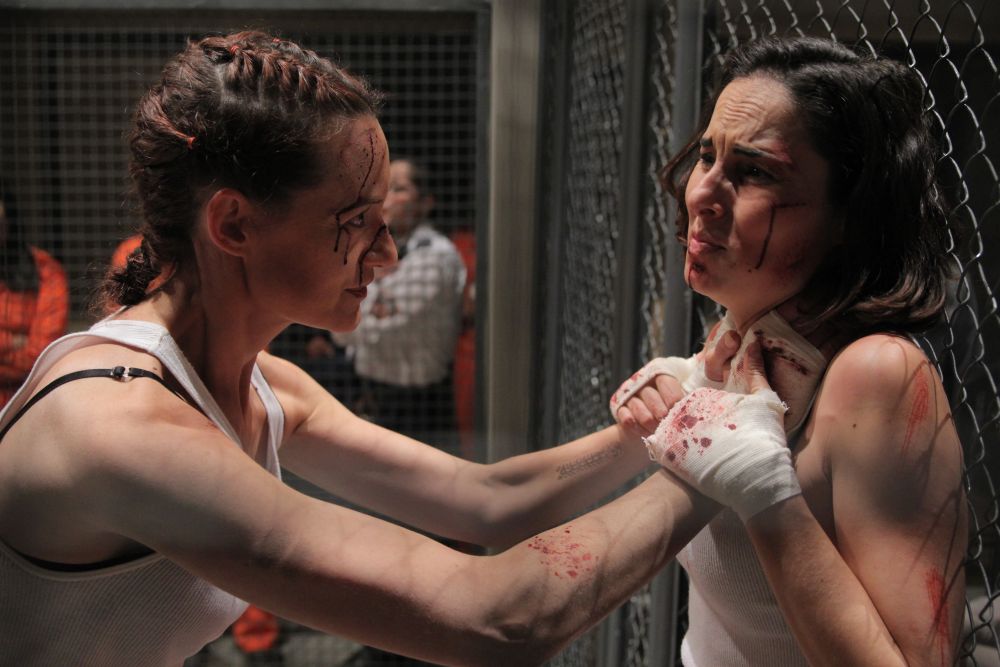 But it’s at the end the story diverts furthest from reality. Instead of having Griselda gunned down in the street by an unknown adversary, she and her longest lasting and most faithful ally, Richi (Román), are trapped in a cold-storage room. Rather than surrender, or be captured by their enemies, legal or otherwise, they agree to a mutual suicide pact. The screen goes black, we hear the sound of gunfire, and the series ends. But mere mortality is no match for the demands of audience ratings. And so, two years later, the show began its second season, with a further 63 episodes detailing the further adventures of Griselda Blanco. The fictional version of the character appears to be even harder to kill than her real-life inspiration.
But it’s at the end the story diverts furthest from reality. Instead of having Griselda gunned down in the street by an unknown adversary, she and her longest lasting and most faithful ally, Richi (Román), are trapped in a cold-storage room. Rather than surrender, or be captured by their enemies, legal or otherwise, they agree to a mutual suicide pact. The screen goes black, we hear the sound of gunfire, and the series ends. But mere mortality is no match for the demands of audience ratings. And so, two years later, the show began its second season, with a further 63 episodes detailing the further adventures of Griselda Blanco. The fictional version of the character appears to be even harder to kill than her real-life inspiration.
We’ll get round to watching that series in a bit, but after this 81-part marathon, I’m inclined to take a bit of a break! It wasn’t a bad show, and never became a chore: Serradilla is solid in the central role, and I also enjoyed Gamboa’s performance. But as noted, it did appear to lose focus as it went on, and did appear to be over-stretching its material. However, it will provide a useful template, against which other adaptations can be measured. For there are at least two competing Hollywood projects in various stages of production: one starring Catherine Zeta-Jones and the other, Jennifer Lopez. As and when those arrive on our screen, we can see how they compare to the extended version, offered by this telenovela.
Star: Ana Serradilla, Juan Pablo Gamboa, Julián Román, Ramiro Meneses

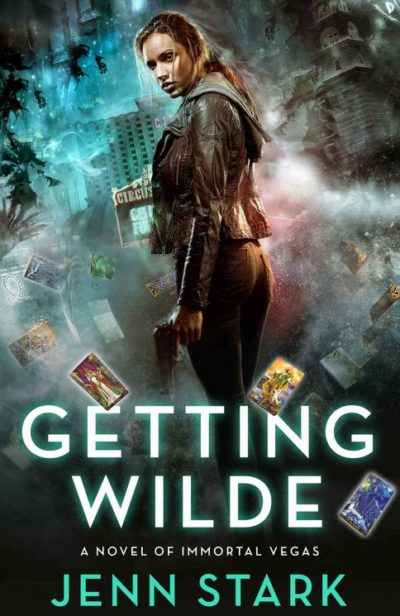 I initially thought I had a fairly good handle on where the first book in the Immortal Vegas series (currently at six entries, plus a prequel) was going, with a Lara Croft-esque lead, who specializes in locating and recovering ancient artifacts. You can also throw in fragments of The Da Vinci Code, since she is hired to retrieve a relic from the secret basement beneath the Vatican, and is going up against a cult of religious, Catholic fanatics. But it somehow ends up taking a sharp right-turn, ending up in a version of Las Vegas where, just out of phase with the casinos and hotels, lurks a hidden dimension of other venues, populated by…
I initially thought I had a fairly good handle on where the first book in the Immortal Vegas series (currently at six entries, plus a prequel) was going, with a Lara Croft-esque lead, who specializes in locating and recovering ancient artifacts. You can also throw in fragments of The Da Vinci Code, since she is hired to retrieve a relic from the secret basement beneath the Vatican, and is going up against a cult of religious, Catholic fanatics. But it somehow ends up taking a sharp right-turn, ending up in a version of Las Vegas where, just out of phase with the casinos and hotels, lurks a hidden dimension of other venues, populated by…




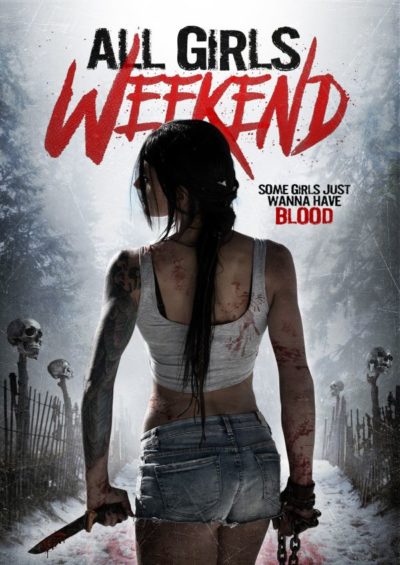 There’s something admirable about a film entirely cast with and directed by women, especially in such a generally male-dominated genre as horror. Unfortunately, all this effort really goes to prove, is that the fairer sex are every bit as capable of turning out uninteresting crap as any man. An ill-conceived cross between The Descent and The Blair Witch Project, this has four old school friends reuniting, along with the workmate of one of them, who tags along because… Well, as with so much in the movie, for no particularly good reason. There’s friction between the friends, from the moment Nancy (Bernadette) shows up four hours late, forcing their departure to be pushed back.
There’s something admirable about a film entirely cast with and directed by women, especially in such a generally male-dominated genre as horror. Unfortunately, all this effort really goes to prove, is that the fairer sex are every bit as capable of turning out uninteresting crap as any man. An ill-conceived cross between The Descent and The Blair Witch Project, this has four old school friends reuniting, along with the workmate of one of them, who tags along because… Well, as with so much in the movie, for no particularly good reason. There’s friction between the friends, from the moment Nancy (Bernadette) shows up four hours late, forcing their departure to be pushed back.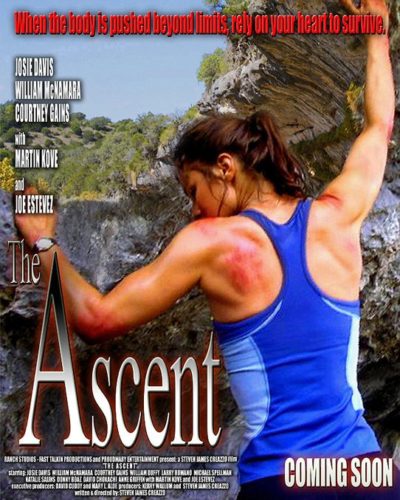 One year ago, the boyfriend of Emily Wilks (Davis) vanished, along with the mountaineering party he was taking on an ascent of the notoriously lethal Devil’s Peak summit. Emily is no mean climber herself, and still works as a trail guide on the mountain. But the group who have booked her services on this day have another motive: finding the legendary stash of gold they believe is hidden on the mountain, which they believe Emily knows the location. Unable to convince them it’s just a myth, she’s forced to lead the gang through the wilderness. Fortunately, it has many,
One year ago, the boyfriend of Emily Wilks (Davis) vanished, along with the mountaineering party he was taking on an ascent of the notoriously lethal Devil’s Peak summit. Emily is no mean climber herself, and still works as a trail guide on the mountain. But the group who have booked her services on this day have another motive: finding the legendary stash of gold they believe is hidden on the mountain, which they believe Emily knows the location. Unable to convince them it’s just a myth, she’s forced to lead the gang through the wilderness. Fortunately, it has many, 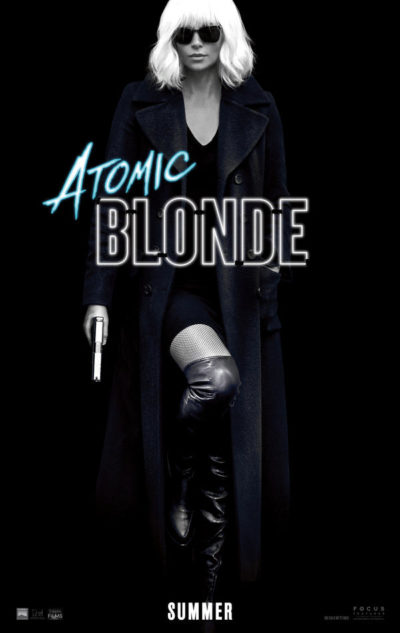 Charlize Theron has been an interesting character and action-heroine contender since 2004’s
Charlize Theron has been an interesting character and action-heroine contender since 2004’s 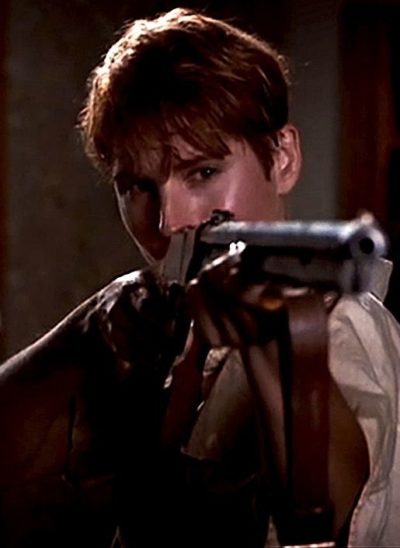 Important to note the year here, because the original Night of the Living Dead, for all its massive influence (without it, there’d be no The Walking Dead or World War Z) was very, very far from an action heroine film. Though it started off focusing on its female lead, Barbara, after she reaches sanctuary in the farmhouse, she spends virtually the rest of the movie in a near-catatonic state, and the film switches focus to Ben, who becomes the film’s hero. The change for this remake is one of a number of alterations, which are likely both necessary and helpful: when you are redoing a film widely regarded as a classic, you’d better bring something new to the party. That’s something largely forgotten by many horror remakes.
Important to note the year here, because the original Night of the Living Dead, for all its massive influence (without it, there’d be no The Walking Dead or World War Z) was very, very far from an action heroine film. Though it started off focusing on its female lead, Barbara, after she reaches sanctuary in the farmhouse, she spends virtually the rest of the movie in a near-catatonic state, and the film switches focus to Ben, who becomes the film’s hero. The change for this remake is one of a number of alterations, which are likely both necessary and helpful: when you are redoing a film widely regarded as a classic, you’d better bring something new to the party. That’s something largely forgotten by many horror remakes. Maybe the makers of this should just have been honest, and called it Terminaliens. For the amount of wholesale theft that has gone on here is really quite staggering. It takes place in the nearish future after a weapons research program goes haywire, and the cyborg results start attacking humans all over the globe. It’s up to a band of freedom fighters to attack the central computer complex and disable the system before humanity is entirely wiped out. Through in an adorable moppet young girl, who falls under the protection of the heroine, along with some crawling through air-ducts, and you’ve got a homage to James Cameron – back when he was good, rather making three-hour epics about doomed icebergs.
Maybe the makers of this should just have been honest, and called it Terminaliens. For the amount of wholesale theft that has gone on here is really quite staggering. It takes place in the nearish future after a weapons research program goes haywire, and the cyborg results start attacking humans all over the globe. It’s up to a band of freedom fighters to attack the central computer complex and disable the system before humanity is entirely wiped out. Through in an adorable moppet young girl, who falls under the protection of the heroine, along with some crawling through air-ducts, and you’ve got a homage to James Cameron – back when he was good, rather making three-hour epics about doomed icebergs. Despite a broad range of
Despite a broad range of  The young Griselda Blanco: real (left) and telenovela versions.
The young Griselda Blanco: real (left) and telenovela versions. A focus of the early episodes sees Blanco joining a gang, which then kidnaps the scion of a rich local family. In the telenovela, this kick-starts her career, because the victim dies, and his father vows vengeance on Griselda, forcing her to go on the run as a young adult. The reality is perhaps even more astonishing, with her former lover, Charles Cosby, reporting that the kidnap and murder took place when Blanco was only eleven years old. After the boy’s parents refused to pay up, the frustrated gang gave her a revolver and challenged her to shoot him in the head. Challenge accepted…
A focus of the early episodes sees Blanco joining a gang, which then kidnaps the scion of a rich local family. In the telenovela, this kick-starts her career, because the victim dies, and his father vows vengeance on Griselda, forcing her to go on the run as a young adult. The reality is perhaps even more astonishing, with her former lover, Charles Cosby, reporting that the kidnap and murder took place when Blanco was only eleven years old. After the boy’s parents refused to pay up, the frustrated gang gave her a revolver and challenged her to shoot him in the head. Challenge accepted… So, jail on both sides. But this is where the stories really start to diverge. In reality, she served 13 years in New York for cocaine smuggling, then was shipped to Florida where worse trouble awaited. For hitman ‘Rivi’ had turned stool-pigeon, and with his testimony linking her to literally dozens of murders, the death penalty loomed large. However, his testimony was largely discredited after a
So, jail on both sides. But this is where the stories really start to diverge. In reality, she served 13 years in New York for cocaine smuggling, then was shipped to Florida where worse trouble awaited. For hitman ‘Rivi’ had turned stool-pigeon, and with his testimony linking her to literally dozens of murders, the death penalty loomed large. However, his testimony was largely discredited after a  Certainly, there’s major dramatic license in Blanco’s departure from prison. Rather than just reaching the end of her sentence, there’s a dramatic escape from literally being in the electric chair [which is odd, since no-one has been executed in New York state since 1963, and no woman since Martha Jule Beck in 1951]. Using a drug which gives the impression of death, allows her gang to break her out by ambulance (Episode 44). From there she returns to Colombia, and only at this point, does Blanco cross paths with the most notorious drug-lord of them all, Pablo Escovar. However, it appears they knew each other far longer. Some sources
Certainly, there’s major dramatic license in Blanco’s departure from prison. Rather than just reaching the end of her sentence, there’s a dramatic escape from literally being in the electric chair [which is odd, since no-one has been executed in New York state since 1963, and no woman since Martha Jule Beck in 1951]. Using a drug which gives the impression of death, allows her gang to break her out by ambulance (Episode 44). From there she returns to Colombia, and only at this point, does Blanco cross paths with the most notorious drug-lord of them all, Pablo Escovar. However, it appears they knew each other far longer. Some sources  But it’s at the end the story diverts furthest from reality. Instead of having Griselda gunned down in the street by an unknown adversary, she and her longest lasting and most faithful ally, Richi (Román), are trapped in a cold-storage room. Rather than surrender, or be captured by their enemies, legal or otherwise, they agree to a mutual suicide pact. The screen goes black, we hear the sound of gunfire, and the series ends. But mere mortality is no match for the demands of audience ratings. And so, two years later, the show began its second season, with a further 63 episodes detailing the further adventures of Griselda Blanco. The fictional version of the character appears to be even harder to kill than her real-life inspiration.
But it’s at the end the story diverts furthest from reality. Instead of having Griselda gunned down in the street by an unknown adversary, she and her longest lasting and most faithful ally, Richi (Román), are trapped in a cold-storage room. Rather than surrender, or be captured by their enemies, legal or otherwise, they agree to a mutual suicide pact. The screen goes black, we hear the sound of gunfire, and the series ends. But mere mortality is no match for the demands of audience ratings. And so, two years later, the show began its second season, with a further 63 episodes detailing the further adventures of Griselda Blanco. The fictional version of the character appears to be even harder to kill than her real-life inspiration.

























 If this seems somewhat familiar, it’s because it is not dissimilar to
If this seems somewhat familiar, it’s because it is not dissimilar to